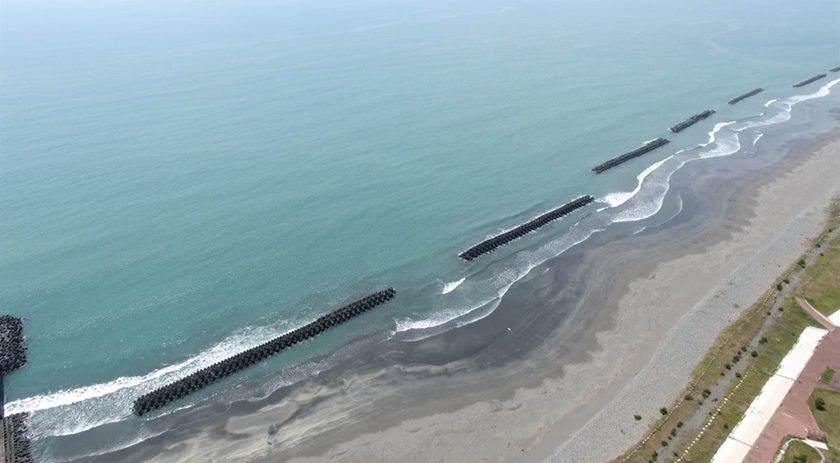
我が国において海岸線に接する市町村の総面積は32%に過ぎないが,人口では 46%,工業出荷額では47%,商業販売額では77%を占める重要な地域である. 1950年代の海岸では特に高潮災害が著しく,また希とは言い難い頻度で津波災害も被っており,さらに海岸侵食の問題が最近ますます深刻化していて,これに対する防災体制の確立が不可欠である.また,海岸が有する様々な特性・資源を,産業,エネルギー,生活,レクリエーションなどに利用することにより,社会の発展に貢献することができる.さらに海岸は,陸域と海域との遷移領域であるために,生態系,自然環境の上で代替不可能な空間であると同時に,脆弱な空間でもあるので,この領域の生態系,自然環境の維持は重要かつ困難な課題となっている.海岸・沿岸環境研究室では,このような海岸の防災,利用,生態に関わる課題について研究に取り組み,その成果を社会に還元してきた.
Coastal zones, narrow boundary areas between land and sea, are important centers of human activity in the world. In Japan, 46% of the population is concentrated along its long coastline, and 47% of industrial productions and 77% of commercial sales take place in coastal cities. Coastal zones are dynamic environments under the strong influences of ocean waves and currents. Destructive long waves such as storm surges and tsunamis are occasionally triggered by natural forces to devastate low-lying coastal areas. Additionally, coastal erosion became a serious problem in Japan due to the loss of sediment balance by human interventions. Coastal protection and disaster mitigation are, therefore, critical issues in coastal zone management. Furthermore, coastal zones are the most ecologically productive portion of the world, which cannot be replaced by other spaces. Coastal environmental protection and habitat conservation are also challenging issues. Coastal Engineering Laboratory has been conducting various researches on these issues and transferring the research output to society.
このような海岸の諸課題の解決においてまず必要となるのは,Fig. 1に示すように,外力としての波,流れなどの理解である.そして,その結果として引き起こされる漂砂・海浜地形変化,構造物に対する波力などが続く問題となる.さらに,内湾の水質問題や,最近では生態系の問題に対しても,波・流れ,地形・底質,および構造物が,生態系の基盤となる物理的環境を規定するという観点からのアプローチにより,水質,生態系の保全に寄与することができる.海岸・沿岸環境研究室における研究は,このような理解に立って,海岸過程の諸要素とそのシステムの解明・制御を目指している.
Scientific comprehension of coastal waves and currents that determine physical environments in coastal zones is of primary importance to tackle the coastal issues. Then, we could understand, predict and control coastal processes such as material transport, morphological changes, wave forces on coastal structures as illustrated in Fig. 1. Based on this standpoint, CEL aims at the elucidation of individual processes and control of the whole system for the sustainable development of coastal zones.

海岸研究室では、より上質な海岸沿岸域環境の創出を目指し、以下のようなテーマに着目しながら研究を行なっています。 これらのテーマを考えるために、現地観測・実験・数値計算などの 手法を組み合わせて総合的な研究を行なっています。
In CEL, we conduct our researches on the following themes to realize better coastal environments. We combine different approaches such as field observations, laboratory experiments, and numerical simulations to understand complex coastal phenomena and to propose effective solutions to coastal problems.
海岸・沿岸環境研究室における研究対象は,沿岸域における流体運動,土砂移動,物質循環,生態系など,広い範囲に及び,これら相互が密接に関係・オている.したがって,研究を実施するためには,海岸工学・水理学に加えて,流体力学,地形・地理学,海洋学,化学,生物学などの幅広い知識と複雑な現象の本質を見抜く洞察力の修得が必要となる.各研究課題の実施に際しては,まず,自然現象を理解し,これをモデル化し,対応策を提案していくという過程が一般的である.また,問題解決の手段としては,理論解析,室内実験,現地観測,数値シミュレーションなどが組み合わせて用いられる.このようななかで, 現象の本質を科学的に見抜く目を養い,それに対する独創的かつ適切なアプローチの方法を開発し,さまざまな制約条件のもとで最適な技術的対応策を提案していく能力が求められる.これらは当研究室で研究を実施していく上で必要な能力であるのみならず,一般的な社会においても極めて重要な素養であると考えられるため,研究課題の設定や研究・教育の実施にはこの点が最も重要視される.具体的な研究・教育活動の方針は以下のように要約される.
実験や現地観測を尊重する
波・流れ・海浜過程や水質・生態系に関する現地観測を継続的に実施.計算機によるシミュレーションを実施する場合にも,現象の理解を目的とする数値実験としての側面を重視する.
構成員各自が独立した課題に取り組む.
個人の独創性を重視する環境作り.実験や観測を共同して実施する場合にも,独立性を保てるように各構成員の課題を設定し,構成員相互の緊密な連係のもとに研究の相乗的な進展を図る.
国内外の研究者・実務経験者と積極的に交流する.
海岸工学は特に,対象が世界共通であり,自然現象の理解を基本とするため,国際的な情報発信,意見交換が重要となる.研究室への海外からの来訪者も多い.
The research topics of CEL are diverse, but they are closely related to each other, such as coastal hydrodynamics, coastal sediment transport/morphological changes, coastal material circulations and coastal ecosystems. Therefore, conducting research in CEL requires broad knowledge on fluid mechanics, geology/geomorphology, oceanography, chemistry and biology besides civil engineering subjects. The typical research in CEL starts with understanding relevant natural processes and then making a mathematical model and finally propose effective solutions to the problem. We usually employ more than one approach from theoretical analysis, laboratory experiments, field observation, and numerical simulations. Through the reaserch in CEL, students develop abilities to grasp the essence of complex phenomena, find an appropriate approach for the problem, and propose the optimum measure under given constraints. We give great importance to the educational aspects of research in setting student’s research topic as they are vital abilities in general society as well. Our research policy is summarized as follows.
We give importance to field works and laboratory experiments.
We continuously carry out fieldwork and laboratory experiments of different coastal processes. When implementing numerical simulations, we give importance to an aspect of numerical experiments for the purpose of understanding coastal processes.
We let each member conducts research independently.
We make a laboratory environment to respect for individual originality of each member. When large-scale fieldwork/laboratory experiments are jointly conducted by multiple members, we arrange an independent subject to each member and promote synergistic research progress via an effective collaboration of the members.
We promote our members to exchanges with engineers and researchers out of CEL.
The research target in coastal engineering is common all over the world as it is based on the understanding of natural phenomena. We make an effort to share research outcomes and exchange information with oversea researchers.